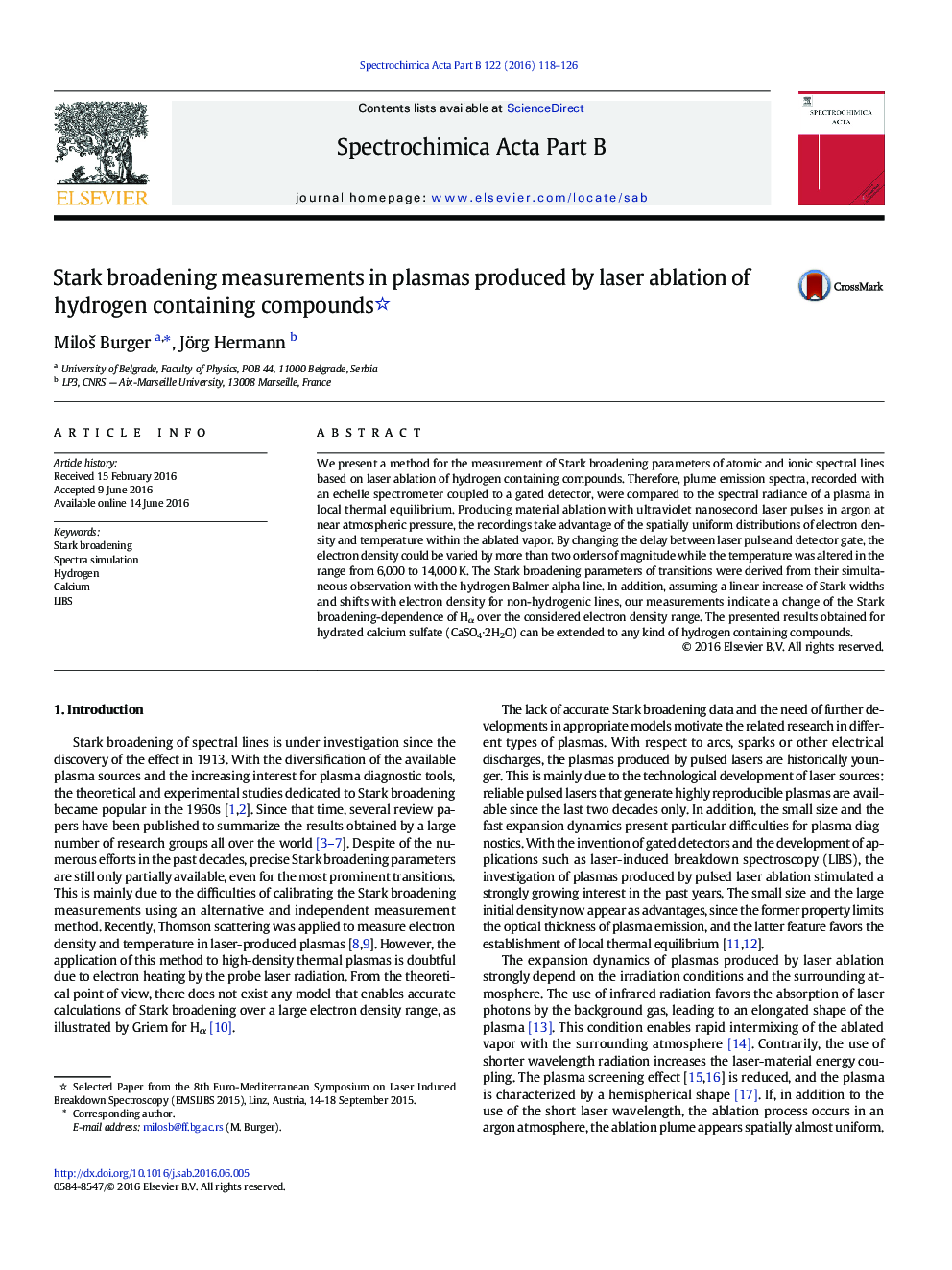| Article ID | Journal | Published Year | Pages | File Type |
|---|---|---|---|---|
| 1239560 | Spectrochimica Acta Part B: Atomic Spectroscopy | 2016 | 9 Pages |
•Combining the conditions of UV nanosecond laser irradiation, hydrogen containing sample, and ablation under argon atmosphere, we obtain nearly ideal plasma properties for Stark broadening measurements.•Modeling of the plasma emission spectrum allow us to evaluate precisely the optical thickness of all observed transitions and to determine the Stark width by taking into account all other relevant line broadening mechanisms.•Our measurements indicate a change of the Hα Stark-broadening dependence on electron density (ne) that occurs when ne varies from values < 10 cm−3 to larger values.•A large number Stark broadening parameters were measured with fair accuracy; some of them for the first time.
We present a method for the measurement of Stark broadening parameters of atomic and ionic spectral lines based on laser ablation of hydrogen containing compounds. Therefore, plume emission spectra, recorded with an echelle spectrometer coupled to a gated detector, were compared to the spectral radiance of a plasma in local thermal equilibrium. Producing material ablation with ultraviolet nanosecond laser pulses in argon at near atmospheric pressure, the recordings take advantage of the spatially uniform distributions of electron density and temperature within the ablated vapor. By changing the delay between laser pulse and detector gate, the electron density could be varied by more than two orders of magnitude while the temperature was altered in the range from 6,000 to 14,000 K. The Stark broadening parameters of transitions were derived from their simultaneous observation with the hydrogen Balmer alpha line. In addition, assuming a linear increase of Stark widths and shifts with electron density for non-hydrogenic lines, our measurements indicate a change of the Stark broadening-dependence of Hα over the considered electron density range. The presented results obtained for hydrated calcium sulfate (CaSO4⋅2H2O) can be extended to any kind of hydrogen containing compounds.
